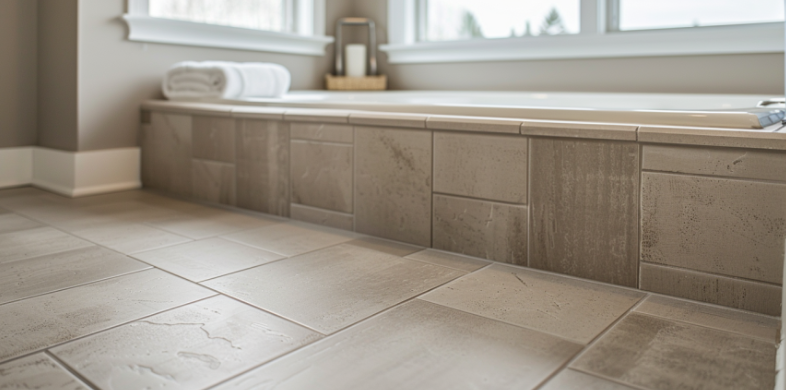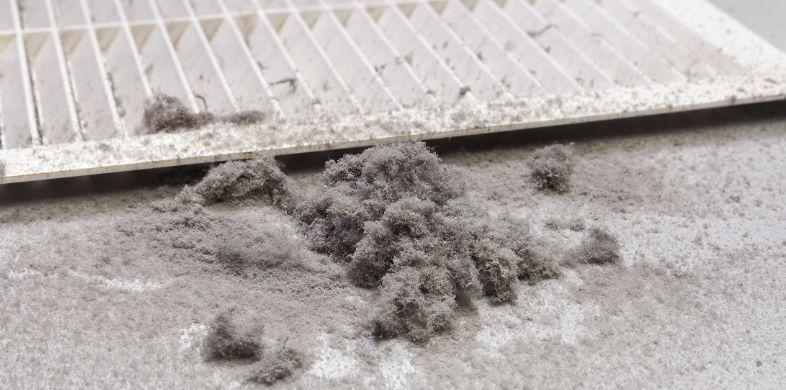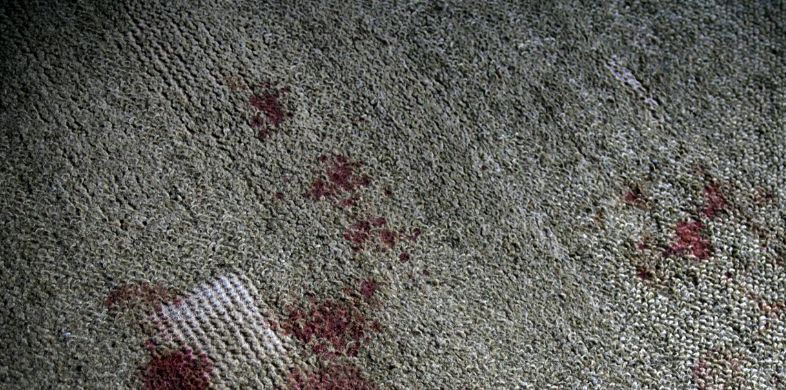
How To Remove Mold & Mildew From Tile and Grout
TL;DR: Hiring a professional tile and grout cleaner is the most effective and hassle-free solution. To remove mold and mildew from tile and grout, you can attempt DIY solutions such as natural cleaners or mold removal products, but this can be a risk to your health. Seek professional cleaning services to ensure your home is healthy and safe!
Mold and mildew in the bathroom aren’t just unsightly; they pose health risks and can cause significant damage over time. Tackling this challenge head-on requires knowledge, patience, and the right approach. Whether you’re facing a minor problem or a full-blown infestation, understanding how to effectively remove mold and mildew from tile and grout is crucial.
While DIY solutions offer a starting point, they often fall short against persistent issues. This blog explores both home remedies and the undeniable benefits of professional intervention, guiding you through each step to reclaim a clean, safe, and pristine bathroom environment. If you’re looking for a definitive solution to mold and mildew, keep reading to learn why sometimes, the best action is to call in the experts.
Understanding Mold and Mildew
Before diving into the cleaning process, it’s essential to understand what we’re up against. Mold and mildew are types of fungi that thrive in moist, warm environments. While they share similarities, there are key differences. Mold tends to be thicker, raising and embedding into surfaces, showing up in colors from black to green. Mildew, on the other hand, presents as a powdery or fluffy white substance that turns black or brown over time, often lying flat on surfaces.
These fungi are not just aesthetic concerns; they can pose significant health risks, particularly to those with allergies, asthma, or compromised immune systems. Exposure to mold spores can lead to respiratory issues, skin irritation, and other health problems.
Why do mold and mildew favor tile and grout? Tiles are commonly used in areas with a lot of moisture, such as bathrooms and kitchens. Grout, being porous, absorbs water and provides an ideal breeding ground for these fungi. Lack of proper ventilation and light in these areas can exacerbate the problem, allowing mold and mildew to flourish.
Preparing for the Cleaning Process
Before you even begin the battle against mold and mildew on your tiles and grout, proper preparation is key. Ensuring you have the right tools and safety measures in place will not only make the cleaning process smoother but also protect your health and the surface you’re treating. The first thing you need to ensure you have is the correct protective gear.
The spores released by mold and mildew can be harmful if inhaled or if they come into contact with your skin. To safeguard your health, wear protective gear such as gloves, goggles, and a mask. This will minimize exposure to both the fungi and the cleaning agents used.
Additionally, you need to ensure proper ventilation. Enhance airflow in the area you’re cleaning by opening windows or using a fan. This not only helps in reducing the inhalation of spores but also aids in drying the area post-cleaning, which is vital in preventing future growth.
DIY Cleaning For Mold
DIY attempts to remove mold on tile and grout can be straightforward with the use of everyday household products. Remember to always use proper protective gear and ventilation before trying to remove mold or mildew.
Vinegar Spray
Using undiluted white vinegar, fill a spray bottle and coat the moldy areas thoroughly. The natural acidity of the vinegar works wonders in breaking down the mold. Allow it to sit for an hour, then take a stiff brush to the area, scrubbing vigorously before rinsing with water and drying completely.
Baking Soda Scrub
Create a paste by mixing baking soda with water, then apply this mixture directly to the moldy grout and tiles. This paste should be left for a few minutes to soften the mold, making it easier to scrub away with a stiff brush. After scrubbing, rinse the area well and dry it to prevent any moisture from lingering.
Hydrogen Peroxide Treatment
For a potent mold-fighting solution, fill a spray bottle with 3% hydrogen peroxide and spray it onto the affected areas. Let it sit for about 10 minutes, which allows the hydrogen peroxide to penetrate and kill the mold at its roots. Afterward, a stiff brush can be used to remove the mold, followed by a thorough rinse and dry.
Tea Tree Oil Solution
Mixing 1 teaspoon of tea tree oil with one cup of water in a spray bottle creates a powerful, natural mold remover. Spray this solution on the moldy spots and let it dry without rinsing. The antimicrobial properties of tea tree oil not only kill the mold but also help prevent future growth.
These DIY cleaning methods blend the power of natural ingredients with a bit of elbow grease to effectively remove mold from tile and grout, ensuring your home remains clean and healthy. Regular upkeep and good ventilation are key to avoiding mold recurrence.
The Importance of Professional Cleaning To Remove Mold From Tile & Grout
While DIY methods for mold removal can be effective for minor issues, the depth and severity of mold infestations often necessitate the expertise of professional cleaning services. Professional cleaners bring a level of thoroughness, efficiency, and safety to the process that is hard to achieve with home remedies.
Professionals begin with a detailed assessment to determine the extent of the mold problem, identifying not just the visible mold but also hidden growth within porous surfaces like grout. They have access to advanced tools and techniques, such as high-grade steam cleaners and EPA-approved fungicides, that can eradicate mold more thoroughly than DIY methods.
Mold exposure can lead to health issues, especially in individuals with allergies, asthma, or compromised immune systems. Professional cleaners are equipped with the necessary protective gear and follow strict safety protocols to prevent the dispersal of mold spores during the cleaning process, minimizing health risks to inhabitants.
Attempting to remove severe mold infestations without proper knowledge or tools can be time-consuming and may even cause damage to your tiles and grout. Professionals have the expertise to efficiently remove mold without harming the surfaces, preserving the integrity and appearance of your tiled areas. Beyond just removing existing mold, professional services often include measures to prevent future growth. This can range from applying sealants that protect grout from moisture to advising on ventilation improvements and humidity control in your home.
Preventing Future Mold and Mildew Growth
After addressing mold and mildew in tile and grout, taking steps to prevent their return is crucial for maintaining a healthy and clean home environment. Mold thrives in moist, warm conditions, so controlling these elements is key to keeping your spaces mold-free. Here are effective strategies to minimize the risk of future mold and mildew growth.
Enhance Ventilation: Poor ventilation in bathrooms, kitchens, and other high-moisture areas creates the perfect breeding ground for mold. Installing exhaust fans, opening windows, and using dehumidifiers can significantly reduce humidity levels, making it harder for mold to grow.
Use Mold-Resistant Products: When renovating or repairing, consider using mold-resistant paint, grout, and caulking. These products contain compounds that inhibit mold growth, offering an additional layer of protection in areas susceptible to moisture.
Regular Cleaning: Routine cleaning can prevent mold spores from settling and proliferating. Use mild, natural cleaning solutions weekly to keep tiles and grout clean. Pay special attention to corners and crevices where moisture can accumulate.
Fix Leaks Promptly: Water leaks from pipes, faucets, or in the roof can introduce excessive moisture into your home, fostering mold growth. Inspect your home regularly for leaks and address them immediately to keep the area dry.
Maintain Dry Surfaces: After showering or splashing water, use a squeegee to remove water from tile surfaces quickly. This simple habit can drastically reduce the moisture level on your tiles and grout, discouraging mold and mildew formation.
Control Indoor Humidity: Aim to keep indoor humidity levels between 30% and 50%. Hygrometers can monitor humidity levels, helping you adjust your dehumidifier settings or ventilation to maintain an optimal environment.
Implementing these preventive measures can greatly reduce the likelihood of mold and mildew returning to your tile and grout. By keeping areas dry, improving air circulation, and committing to regular maintenance, you can enjoy a cleaner, healthier home for years to come.
Professional Tile & Grout Cleaning Near You
Addressing mold and mildew in tile and grout effectively involves both thorough removal and diligent prevention. Whether tackling minor issues with DIY solutions or enlisting professional services for deeper problems, the goal is to act swiftly to mitigate health risks and preserve your home’s integrity. Emphasizing preventive measures—like enhancing ventilation, opting for mold-resistant materials, maintaining cleanliness, fixing leaks promptly, and managing humidity levels—is essential to prevent future growth.
Steamy Concepts, serving both Tucson and Phoenix, is your go-to expert for professional tile and grout cleaning services. With years of experience, state-of-the-art equipment, and a commitment to excellence, Steamy Concepts specializes in deep cleaning that not only eradicates mold and mildew but also revitalizes the appearance of your tiles and grout. Our skilled technicians use powerful steam cleaning methods that are safe, effective, and environmentally friendly, ensuring your home is not only clean but also healthy. Trust Steamy Concepts to restore the sparkle to your tiled surfaces and protect your home against future mold and mildew growth.
Frequently Asked Questions About Mold on Tile & Grout Floors
How often should I clean my tiles and grout to prevent mold growth?
Regular cleaning is key to preventing mold growth. It’s recommended to clean tiles and grout at least once a week with mild, natural cleaning solutions. Additionally, after showering or any significant splashing, use a squeegee to remove excess water from the surfaces.
Are professional cleaning services worth it for tile and grout mold issues?
Professional cleaning services are highly recommended for severe mold infestations or if DIY methods fail to eliminate the problem. Professionals have the tools, knowledge, and cleaning solutions that can more thoroughly remove mold and prevent its return, saving time and ensuring the longevity of your tile and grout.
What are the health risks associated with mold in the home?
Mold exposure can lead to various health issues, especially for individuals with allergies, asthma, or compromised immune systems. Common symptoms include respiratory problems, skin irritation, and allergic reactions. It’s important to address mold issues promptly to protect your health.
Table of Contents
Other Blogs You May Be Interested In










Leave a Reply